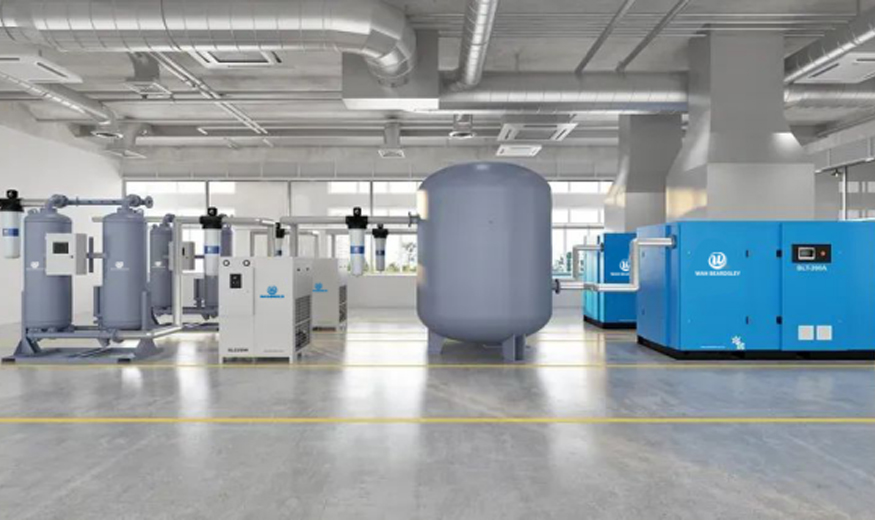What is the difference between refrigerated dryers and adsorption?

Both refrigerated dryers and adsorption dryers are devices used to remove moisture from compressed air. It can be observed that they are named based on their respective working principles.
Refrigerated Dryer Working Principle:
1.Moist compressed air enters the heat exchanger and undergoes heat exchange with refrigerant, causing a significant drop in the temperature of the compressed air. The lower the temperature, the less moisture the compressed air can carry. Excess moisture beyond the carrying capacity of compressed air at low temperatures condenses into water droplets. Simultaneously, the compressed air reaches a saturated state. The lowest temperature achievable during this cooling is the pressure dew point achieved by the refrigerated dryer in treating compressed air under the given conditions.
2.Compressed air enters the air-water separator, and condensed water is separated and discharged through the drainage valve.
3.The compressed air enters the heat exchanger for the second time, undergoes heat exchange with the hot compressed air just entering the refrigerated dryer, causing the compressed air to warm up, thus raising its temperature above the pressure dew point.
4.The treated and dried compressed air is discharged.
Adsorption Dryer Working Principle:
1.Compressed air enters the adsorption tower, where moisture in the compressed air is adsorbed by the adsorbent material (commonly using activated alumina).
2.Most of the treated and dried compressed air is discharged.
3.A small portion of the dried compressed air, after passing through the throttling valve or entering the heater (micro-heat), goes into another adsorption tower. This process regenerates the adsorbent, restoring its drying capacity. This portion of compressed air is referred to as the regeneration air.
4.The two adsorption towers switch usage alternately based on preset conditions.
Other Differences Besides Working Principles
1.Difference in Dryness of Treated Air
• Refrigerated dryers, due to limitations in frost point, refrigeration heat exchange efficiency, and air-water separator separation efficiency, can achieve a higher pressure dew point.
• The pressure dew point range achievable by refrigerated dryers is 2°C~10°C.
Adsorption dryers can choose from various performance adsorbents, achieving a lower pressure dew point.
• The pressure dew point range achievable by adsorption dryers is -20°C~-70°C.
2.Difference in Compressed Air Inlet Requirements
• Refrigerated dryers can withstand higher inlet temperatures and pressures. However, high temperatures significantly reduce the drying effectiveness of refrigerated dryers. For demanding conditions, it is advisable to appropriately increase the processing capacity of refrigerated dryers.
• Adsorption dryers have higher requirements for the cleanliness of compressed air. Oil molecules in compressed air can clog the adsorbent, causing irreparable losses and affecting the effectiveness of adsorption drying.
3.Difference in Energy Consumption
• Non-thermal adsorption dryers have the lowest energy consumption.
• Refrigerated dryers have moderate energy consumption as they incorporate a refrigeration compressor.
• Micro-heat adsorption dryers include a heater, resulting in higher energy consumption. However, when comparing the entire system, configuring a micro-heat adsorption dryer generally provides better overall energy efficiency.
4.Difference in Maintenance
• Adsorption dryers require periodic replacement of adsorbents and maintenance of wear valve components.
• Refrigerated dryers do not require consumables; regular cleaning of the drainage valve is sufficient.
5.Difference in Noise Level
• Refrigerated dryers have lower noise levels and are essentially quiet in the operating environment of an air compressor.
• Adsorption dryers generate relatively louder regeneration air noise, which is slightly lower than that of an air compressor.







